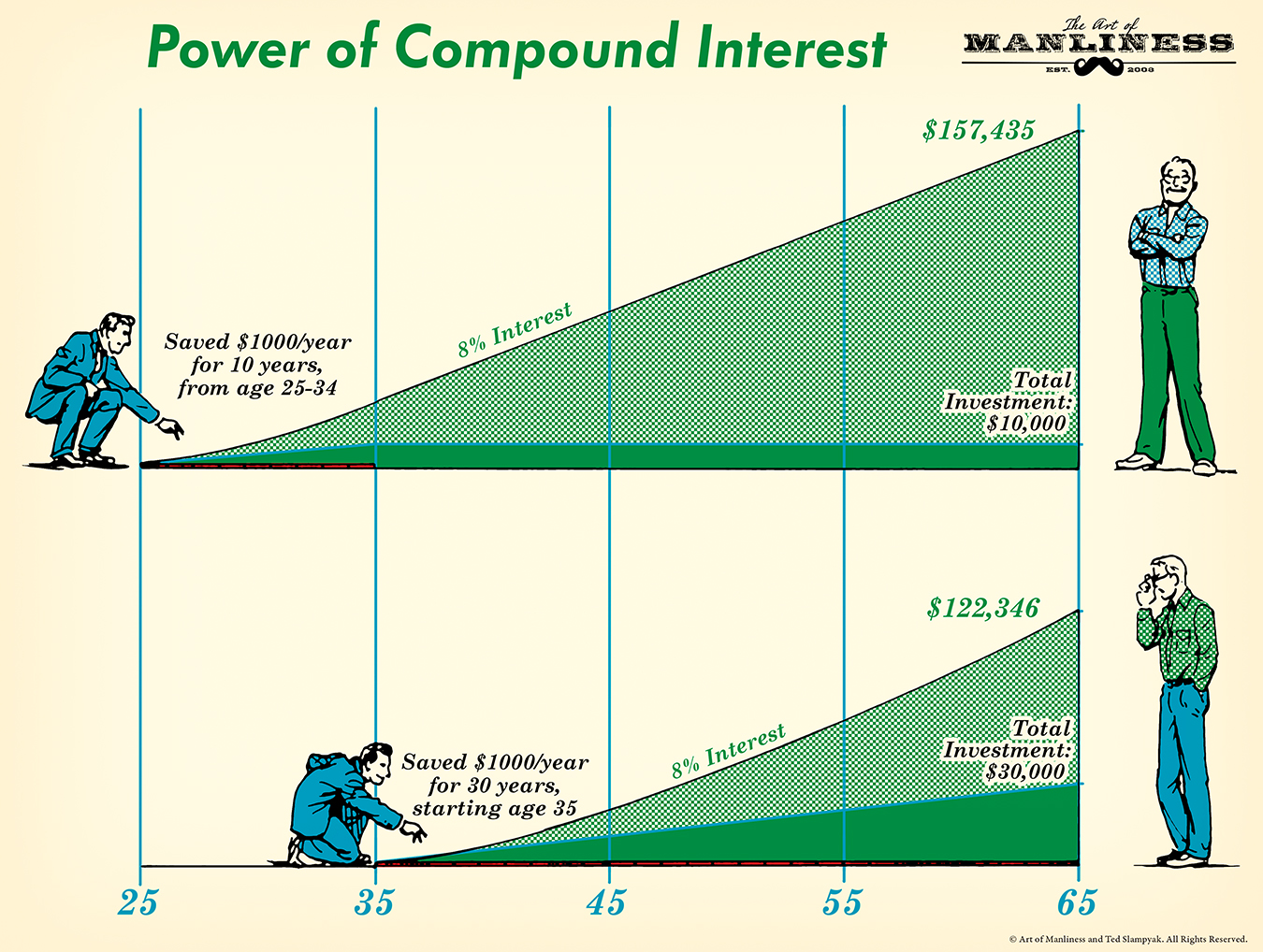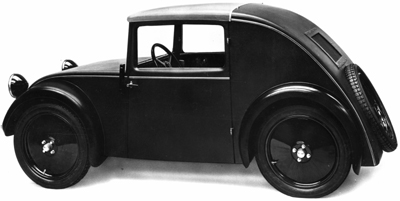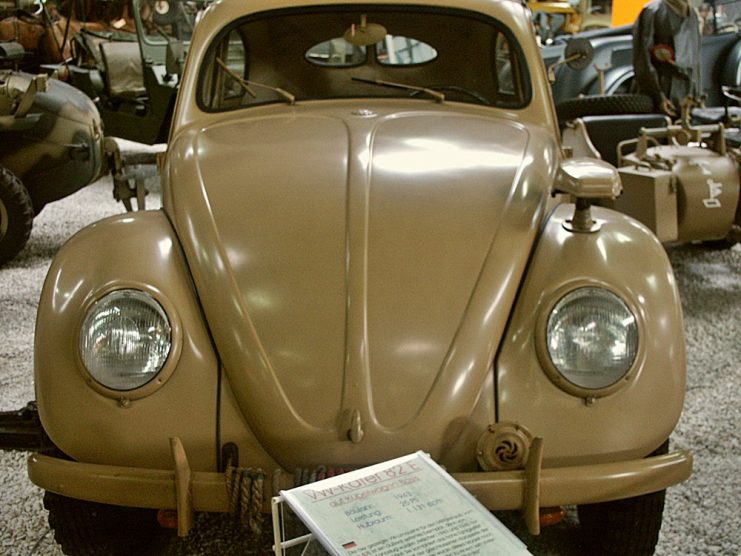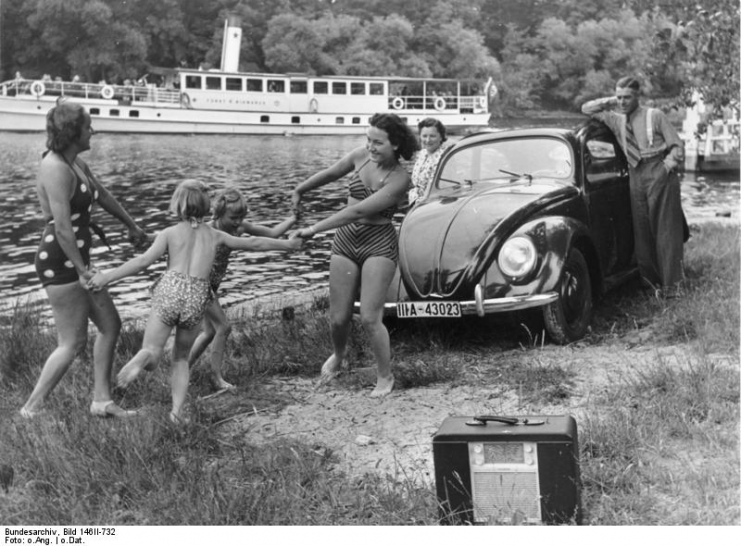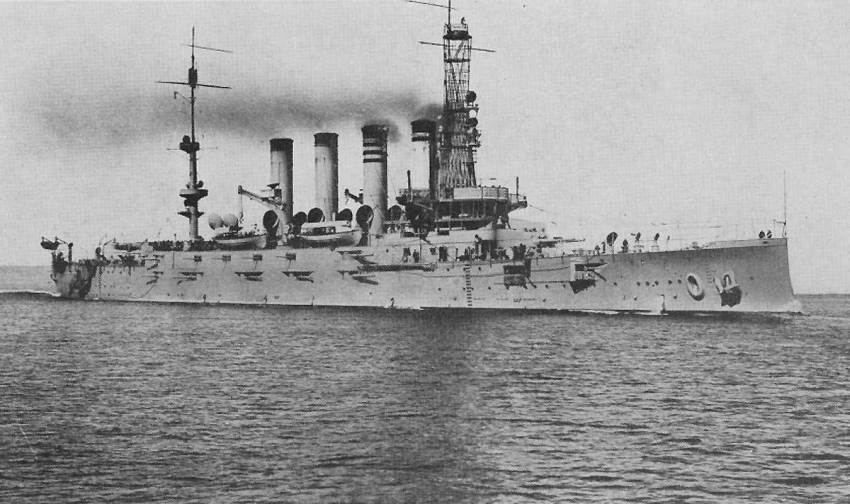I have blogged before about
Gibbs's rules , a character from the show NCIS on how to handle things and also
Moscow Rules about how to be observant when you are an agent working on Moscow where the most feared anti-espionage system ever created existed to foil the agents from the West. This is an article on how to increase your situational awareness. I remember doings "Kim's game" when I was a boy scout. It was a cool exercise on memory retention. I saw this article on "Arts of Manliness".
10 Tests, Exercises, and Games to Heighten Your Senses and Situational Awareness
STOP: BEFORE YOU READ ON, STUDY THE PICTURE ABOVE FOR 60 SECONDS.
THEN, SCROLL DOWN AND SEE IF YOU CAN ANSWER THE FOLLOWING QUESTIONS:
- How many people total were involved in this accident?
- How many males and how many females?
- What color were the two cars?
- What objects were lying on the ground?
- What injury did the man on the ground seem to be suffering from?
- What was the license plate number of one of the cars?
How did you do on this little test? Not as well as you would have
liked? Perhaps it’s time you strengthened your powers of observation and
heightened your
situational awareness.
Enhancing one’s observational abilities has numerous benefits: it
helps you live more fully in the present, notice interesting and
delightful phenomena you would have otherwise missed, seize
opportunities that disappear as quickly as they arrive, and keep you and
your loved ones safe.
Today we’re going to offer some games, tests, and exercises that will
primarily center on that latter advantage: having the kind of
situational awareness that can help you prevent and handle potentially
dangerous and critical situations. But the benefits of practicing them
will certainly carry over into all other aspects of your life as well.
Ready to start heightening your senses and building your powers of observation? Read on.
Situational Awareness and Your Senses

Strengthening your situational awareness involves making sure all of
your senses are turned on and fully tuned into your environment. It
seems like your mind and body do this automatically — aren’t you seeing,
smelling, and hearing everything around you, all the time?
But when someone asks you something like, “What’s your license plate
number?” and you draw a blank, you quickly realize that it’s possible to
have
looked at something hundreds of times without ever
seeing it.
In fact, while our brain gives us the feeling that we’re taking in
the whole picture of our environment from moment to moment, this is an
illusion. We’re really only paying attention to some sets of stimuli,
while ignoring others.
Thus, if you want to strengthen your situational awareness, you have
to be truly intentional about it — you have to consciously think about
utilizing and directing all your senses to a greater degree. You have to
train for observation. And the first step in doing so, is getting reacquainted with the powers and pitfalls of your senses:
Sight
Seeing is what we typically think of when we think of observation,
and it’s what we lean on the most to make sense of our world. Yet what
our eyes take in is also not as accurate as our brains would have us
believe. Eyewitness accounts of crimes are notoriously unreliable, and
famous studies — like
the one
in which folks are asked to concentrate on people passing a basketball
back and forth, and in so doing miss a man in a gorilla suit walking
through the picture — show us that we can look right at something,
without actually seeing it.
These blind spots are due to the fact that our eyes don’t operate
like cameras that record scenes just as they unfold; rather, our brains
take in a number of different shots, and then interpret and assemble
them together to form a coherent picture. Left on autopilot, our brain
ignores many things in our environment, deeming them unimportant in
creating this image.
Nevertheless, sight is an incredibly vital part of our situational
awareness arsenal — especially if we train ourselves to look for things
we’d normally miss. Our eyes tell us if someone looks suspicious or if
something is out of place in our hotel room (indicating someone’s been
there in our absence); they spot peculiar features of a landscape to
help us create a mental map to guide us home from a hike; they take
footage of the exits in a building or of a crime that we can remember
later.
Hearing
As sight-driven creatures, we take in a ton of information with our
eyes (as much as a third of our brain’s processing power goes towards
handling visual input), and most of us feel we’d rather lose our
hearing than our sight.
But hearing is far more essential to keeping track of and
understanding what’s going on around us than we realize — especially
when it comes to staying safe. Our hearing is incredibly attuned to our
surroundings and functions as our brain’s first response system,
notifying us of things to pay attention to and fundamentally shaping our
perception of what’s happening around us.
As neuroscientist Seth Horowitz explains:
“You hear anywhere from twenty to one hundred times
faster than you see so that everything that you perceive with your ears
is coloring every other perception you have, and every conscious thought
you have. Sound gets in so fast that it modifies all the other input
and sets the stage for it.”
Our hearing is so fast because its circuitry isn’t as widely
dispersed in the brain as the visual system is, and because it’s hooked
into the brain’s most basic “primal” parts. Noises hit us right in the
gut and trigger a visceral emotional response.
The quickness and sharpness of our hearing evolved from its survival
advantage. At night, in dense forests, and underneath murky waters, our
sight greatly diminishes or completely fails us, and we can’t see
anything beyond our field of vision. But our ears can still pick up
sensory input in darkness, around corners, and through water in order to
build a mental picture of what’s going on.
Noises are nothing more than vibrations, and we’re
completely surrounded by them every day. But just like with sight, your
ears can be
listening to tons of sounds in your environment, without your brain really
hearing
them; your antennae are always up, but they don’t always send a signal
to pay attention. Such signals only register in your conscious
awareness when they’re particularly salient (as in when you hear your
name said at a busy party), or when they break the usual
pattern/tone/rhythm that your brain expects (like when there’s a scream,
crash, or explosion, or someone is talking in a strange/suspicious
way).
We can tune into more sounds than we usually hear by “perking up” our
ears, concentrating, and trying to distinguish and pull out noises
we’re usually “ear-blind” to.
Smell
In comparison to our senses of sight and hearing, smell doesn’t get
much attention and respect. It’s our oldest sense, and we tend to think
of it moreso with animals than ourselves — like the wolf that can smell
its prey almost 2 miles away.
While dogs indeed have a sense of smell that’s 10,000-100,00X more
powerful than ours, the human sense of smell is nothing to, well, sniff
at. Humans have the ability to detect one
trillion distinct
scents. And while our other senses have to be processed by numerous
synapses before reaching the amygdala and hippocampus and eliciting a
reaction, smell connects with the brain directly, and thus gets deeply
attached to our emotions and long-term memories. This is why catching a
whiff of something from long ago can instantly transport you back in
time.
These ingrained, smell-induced memories serve the same kind of
survival purpose in humans as they do in animals — to identify family
and mates, find food, and be alerted to possible threats. Our sense of
smell is able to distinguish blood kin by scent, and not only can it
identify danger through picking up the scents of smoke, death, gas,
etc., but can even pick up on fear, stress, and disgust in fellow
humans.
Indeed, while the human sense of smell isn’t up to par with animals, studies have shown that we can
track a scent trail in the same way dogs do,
and that the reason we’re not better at it than we are, is that it’s a
skill that has to be developed through practice. Consummate outdoorsman
of days gone by who were highly observant of their surroundings often
reported becoming able to track an animal by scent.
While both animals and humans process smell in automatic ways — when
the smell of freshly baked cookies hits you, your tummy instinctively
grumbles — human smell is in one way superior to the animal variety: we
have the ability to consciously analyze smells and interpret what they
might mean.
Smell can thus help you identify friend or foe, navigate an area — if
we’re close to a factory or dump or a grove of pines or the campfire of
home base, our nose will let us know — and even track game.
Touch & Taste
Touch and taste are two senses that are incredibly enriching for
those seeking to live more mindfully and fully immerse themselves in
their experiences. But for the purposes of being situationally aware of
risk and danger, you won’t use them as much. Touch can come in handy
though when you’re trying to navigate in the dark, and must let the
sensations of your feet and hands lead the way.
Training for Observation: 10 Tests, Exercises, and Games You Can Play to Strengthen Your Situational Awareness
“As a Scout, you should make it a point to see and observe more than the average person.” —Scout Field Book, 1948
If our senses are truly as amazing as we’ve just described, and what
holds us back from using them more is allowing them to default to
autopilot, then we have to find ways to intentionally exercise and
challenge them in order to give them full play.
Mastering situational awareness involves learning how to observe,
interpret, and remember. The following exercises, tests, and games are
designed to strengthen these skills while activating the latent powers
of your senses.
Some of the games and exercises can be practiced alone, while others
would work best in groups, such as a club, gathering of friends, or Boy
Scout troop (several of the ideas in fact come from the 1948 edition of
the
Boy Scout Fieldbook). The games are also great to do as a family —
they’ll keep your kids entertained without your having to reach for the smartphone!
1. “Kim’s Game”
In Rudyard Kipling famous novel
Kim, Kimball O’Hara, an
Irish teenager, undergoes training to be a spy for the British Secret
Service. As part of this training, he is mentored by Lurgan Sahib, an
ostensible owner of a jewelry store in British India, who is really
doing espionage work against the Russians.
Lurgan invites both his boy servant and Kim to play the “Jewel Game.”
The shopkeeper lays 15 jewels out on a tray, has the two young men look
at them for a minute, and then covers the stones with a newspaper. The
servant, who has practiced the game many times before, is easily able to
name and exactly describe all the jewels under the paper, and can even
accurately guess the weight of each stone. Kim, however, struggles with
his recall and cannot transcribe a complete list of what lies under the
paper.
Kim protests that the servant is more familiar with jewels than he
is, and asks for a rematch. This time the tray is lined with odds and
ends from the shop and kitchen. But the servant’s memory easily beats
Kim’s once again, and he even wins a match in which he only feels the
objects while blindfolded before they are covered up.
Both humbled and intrigued, Kim wishes to know how the boy has become
such a master of the game. Lurgan answers: “By doing it many times over
till it is done perfectly — for it is worth doing.”
Over the next 10 days, Kim and the servant practice over and over
together, using all different kinds of objects — jewels, daggers,
photographs, and more. Soon, Kim’s powers of observation come to rival
his mentor’s.
Today this game is known as “Kim’s Game” and it is played both by Boy
Scouts and by military snipers to increase their ability to notice and
remember details. It’s an easy game to execute: have someone place a
bunch of different objects on a table (24 is a good number), study them
for a minute, and then cover them with a cloth. Now write down as many
of the objects as you can remember. You should be able to recall at
least 16 or more.
Here’s an opportunity to play Kim’s Game right now: look at the
illustration below for 60 seconds, then scroll past it, and see how many
objects you can remember!

How did you do? Better keep practicing!
2. Expand and Enhance Your Field of Vision
Most of us, though we don’t realize it, walk around with tunnel
vision. We’re concentrating on a few things directly around or ahead of
us, and everything else drops out of our line of sight. So when you’re
walking around, remind yourself to take in more than you usually do.
Intentionally look for details in your environment you’d ordinarily
overlook. Take note of peculiar features in the landscape, what people
are wearing, side roads, alleyways, car makes and models, signs,
graffiti on the wall — whatever.
To practice expanding your field of vision when you walk, follow these tips from the
Boy Scout Fieldbook:
“Learn to scan the ground in front of you…Let your eyes
roam slowly in a half-circle from right to left over a narrow strip of
land directly before you. Then sweep them from left to right over the
ground farther away. By continuing in this way you can cover the whole
field thoroughly.”
3. What’s That Sound?
Put up a blanket in the corner of the room. Then take turns standing
behind it and making noises with random objects that the rest of the
group has to try to identify. The more obscure and challenging the
noises people can come up with, the better — think striking a match,
peeling an apple, sharpening a knife, combing your hair, etc.
4. Eyewitness Test
Invite someone who your Scouts/friends don’t know to a group
gathering. Have them come in for a few minutes and then leave. Then have
everyone write down a physical description of the stranger and see how
accurate they are.
5. Navigate by Touch and Feel
Can you dress yourself quickly in a pitch black room? Can you walk
through the dark woods without a flashlight? Can you walk around the
house blindfolded? Practice maneuvering and navigating without the use
of your eyes.
6. Whose Nose Knows?
Have one member of a family/group fill paper cups with a variety of
fragrant materials — orange rinds, onion, coffee, spices (cinnamon,
pepper, garlic, etc.), grass, Hoppes No. 9 (any of the sources of
these manly smells
are good candidates) and so on. Then hand the cups to blindfolded
participants, who take a sniff, and pass the cup on. Once the cup has
been re-collected by the facilitator, the participants write down what
they smelled.
7. Feel It
Similar to #6, but place different odds and ends into a box that then
gets passed around. The participants have to feel the object and
identify it from touch alone.
8. Observation Scavenger Hunt
This is a great one to do with kids, and can turn a long walk in the
woods or the city, in which they might be prone to complain, into a fun
game, and chance to strengthen their powers of observation! Before you
set out, come up with a list of things the kids need to find; for
example, on a nature walk you could put down things like a bush with
berries, a bird’s nest, moss, a pine cone, etc. As you walk along, the
kids will be on the lookout for the listed items, and every time they’re
the first to spy one, they can mark another item off their list. See
who can find the most things. It doesn’t have to be a competition
either; you can all look for the items together as a family and simply
keep one checklist.
9. Exit Interview
When you go to a restaurant or other place of business with your
family, make a note of a few things about your environment: the number
of workers behind the counter, the clothing and gender of the person
sitting next to you, how many entrances/exits there are, etc. When you
leave and get into the car to head home, ask your kids questions like
“How many workers were behind the counter?” “Was the person sitting next
to us a man or a woman?” “What color was his/her shirt?” “How many
exits were there?”
10. People Watching With a Purpose
In Sir Arthur Conan Doyle’s
A Study In Scarlet, Dr. Watson
first becomes apprised as to his future companion’s keen powers of
observation and deduction. When the pair notices a man walking down the
street looking at addresses and carrying a large envelope, Holmes
immediately identifies the stranger as a retired Marine sergeant.
After the message bearer affirms this identity, Watson is entirely
startled at Holmes’ observational powers. “How in the world did you
deduce that?” he asks. The detective then offers this explanation:
“It was easier to know it than to explain why I know it.
If you were asked to prove that two and two made four, you might find
some difficulty, and yet you are quite sure of the fact. Even across the
street I could see a great, blue anchor tattooed on the back of the
fellow’s hand. That smacked of the sea. He had a military carriage,
however, and regulation side-whiskers. There we have the marine. He was a
man with some amount of self-importance and a certain air of command.
You must have observed the way in which he held his head and swung his
cane. A steady, respectable, middle-aged man, too, on the face of him —
all facts which led me to believe that he had been a sergeant.”
“Wonderful!” Dr. Watson exclaims.
“Commonplace,” Holmes replies.
If you’d like powers of deduction similar to the resident of 221B
Baker St., practice people watching with more deliberation than is
usually lent the pastime. Notice the clothing, tattoos, and accessories
of passersby, and observe their manners and how they carry themselves.
Then try to guess their background and occupation.
With enough practice in this and the other exercises and games
outlined above, your senses will be heightened, your powers of
observation will increase, and your situational awareness will be
strengthened. Soon you’ll be able to say with Holmes: “I have trained
myself to notice what I see.”

